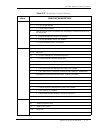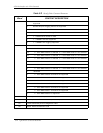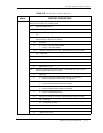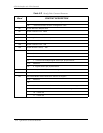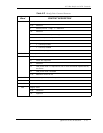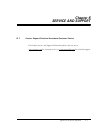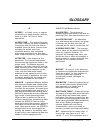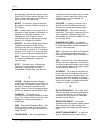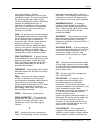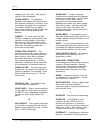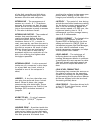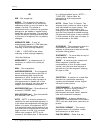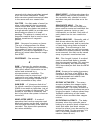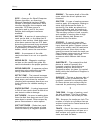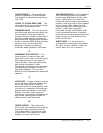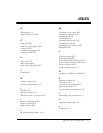
Glossary
G-8 Quickview 40 20/30/40GB AT
S
SCSI – Acronym for Small Computer
System Interface, an American
National Standards Institute (ANSI)
version of Shugart Associates' SASI
interface between the computer and
controller. SCSI has grown in
popularity and is one of the most
flexible and intelligent interfaces
available.
SECTOR – A section of space along a
track on the disk, or the data that is
stored in that section. Hard disks most
often have sectors that are 512 data
bytes long plus several bytes overhead
for error correcting codes. Each sector
is preceded by ID data known as a
header, which cannot be overwritten.
SEEK – A movement of the disk
read/write head in or out to a specific
track.
SERVO DATA – Magnetic markings
written on the media that guide the
read/write heads to the proper position.
SERVO SURFACE – A separate surface
containing only positioning and disk
timing information but no data.
SETTLE TIME – The interval between
when a track to track movement of the
head stops, and when the residual
vibration and movement dies down to a
level sufficient for reliable reading or
writing.
SHOCK RATING – A rating (expressed
in Gs) of how much shock a disk drive
can sustain without damage.
SOFT ERROR – An error in reading data
from the disk that does not recur if the
same data is reread. Often caused by
power fluctuations or noise spikes.
SOFT SECTORED – Disks that mark
the beginning of each sector of data
within a track by a magnetic pattern.
SPINDLE – The center shaft of the disk
upon which the drive’s platters are
mounted.
SPUTTER – A type of coating process
used to apply the magnetic coating to
some high-performance disks. In
sputtering, the disks are placed in a
vacuum chamber and the coating is
vaporized and deposited on the disks.
The resulting surface is hard, smooth,
and capable of storing data at high
density. Maxtor disk drives use
sputtered thin film disks.
STEPPER – A type of motor that
moves in discrete amounts for each
input electrical pulse. Stepper motors
used to be widely used for read/write
head positioner, since they can be
geared to move the head one track per
step. Stepper motors are not as fast or
reliable as the rotary voice coil
actuators which Maxtor disk drives
use.
SUBSTRATE – The material the disk
platter is made of beneath the
magnetic coating. Hard disks are
generally made of aluminum or
magnesium alloy (or glass, for optical
disks) while the substrate of floppies is
usually mylar.
SURFACE – The top or bottom side of
the platter which is coated with the
magnetic material for recording data.
On some drives one surface may be
reserved for positioning information.
T
THIN FILM – A type of coating, used
for disk surfaces. Thin film surfaces
allow more bits to be stored per disk.
TPI – Acronym for tracks per inch. The
number of tracks or cylinders that are
written in each inch of travel across the
surface of a disk.
TRACK – One of the many concentric
magnetic circle patterns written on a
disk surface as a guide to where to
store and read the data.



